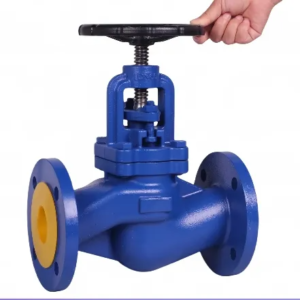Globe valves are widely used in industrial pipelines for precise flow control and shut – off applications. One of their key characteristics is their unidirectional flow design, meaning they only allow fluid to flow in one direction.
Why Are Globe Valves Designed for One – Way Flow?
The unidirectional nature of globe valves is primarily due to their internal structure and operational mechanism.
- Low Inlet, High Outlet Flow Path: Globe valves are designed with a low – inlet, high – outlet flow path, ensuring smooth operation and effective shut – off. This structure enhances sealing performance by utilizing fluid pressure to keep the valve tightly closed, reduces wear and tear on the valve components to increase lifespan, and prevents backflow which could lead to leakage or operational failure.
- Perpendicular Valve Disc Movement: Unlike other valve types, a globe valve’s disc moves vertically to the flow direction. This unique movement provides precise flow control for throttling applications, ensures tight sealing when the valve is closed to prevent unwanted leakage, and makes bidirectional flow impractical as reverse pressure can damage the sealing surface.
- Check Valve Effect: Since the valve disc is designed to press against the flow when closed, it naturally acts as a check valve, preventing fluid from flowing in the wrong direction. If installed incorrectly, the valve might not seal properly, leading to leakage issues, and may suffer from increased wear, reducing efficiency and lifespan.
Key Benefits of Using Globe Valves in Your Pipeline
Choosing a high – quality globe valve provides several operational and cost – saving benefits:
- Precise Flow Regulation – Ideal for controlling flow in industries like oil & gas, chemical processing, and water treatment.
- Enhanced Sealing Performance – Reliable shut – off minimizes leaks and improves efficiency.
- Durability & Longevity – Designed for high – pressure applications with minimal maintenance.
- Versatile Applications – Suitable for steam, water, oil, and corrosive media.
Choosing the Right Globe Valve for Your Application
When selecting a globe valve, consider the following factors:
- Material:
- CI (Cast Iron) – Suitable for low – pressure applications and general water systems.
- DI (Ductile Iron) – Stronger and more durable than cast iron, ideal for higher pressure and demanding environments.
- Pressure Rating – Ensure compatibility with system pressure requirements.
- End Connection – Available in flanged, threaded, or welded options.
Need expert guidance? Contact us today for professional recommendations and competitive pricing on high – quality industrial globe valves!



